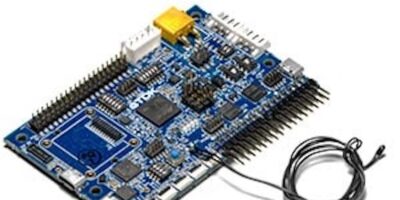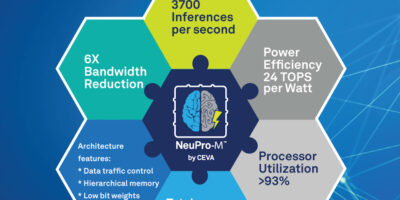Powered by Syntiant’s NDP101 low power edge AI processor, a medallion developed by Zinfanite Technologies acts as a virtual assistant. It provides hands-free functionality, wake word recognition and speech commands in a compact, waterproof device designed to be worn around the neck or attached to a shirt pocket or sleeve.
Used with Zinfanite’s companion smart phone application, the voice activated medallion (VAM) can be used as a wireless virtual assistant that allows users to call, send messages or listen to music with hands- and arms-free operation. The VAM also works as an Alexa-enabled device that provides access Alexa’s functions.
Jana Fernando, founder of Zinfanite Technologies, explains: “VAM easily connects via Bluetooth and gives users the flexibility of staying connected for whatever they are doing, whether it is exercising, taking a trip to the grocery store or just sitting at home relaxing listening to music. VAM also is equipped with Syntiant technology that allows for highly accurate deep learning processing with minimal drain on battery consumption, giving more time for consumers to enjoy their hands-free connectivity experiences.”
The Syntiant® NDP101 Neural Decision pocessor enables always-on, cloud-free wake word identification and other voice commands for the Zinfanite VAM. Embedded with the Syntiant Core 1 neural network, the NDP101 microWatt-level processor achieves 100 times more efficiency and 10 times more throughput compared to traditional microcontroller-based designs, claims the company. The processor is custom built to run neural workloads and consumes less than 140 microW when running deep learning processing for voice and sensor applications.
The VAM has a range of up to 200 feet or 60 metres. It weighs one ounce or 28g and is available in a variety of styles and colours. It also has a programable tap-detection feature that allows users to control the medallion with additional commands, such as to play and pause music, as well as adjust volume levels.
It has two microphones with noise filtering technology and a built-in speaker. The Bluetooth 5.0 connected medallion allows for 16 hours of continuous talk / music listening and alerts can be customised to advise the status of battery percentage remaining, new emails or texts.
“Our voice activated medallion serves many lifestyles especially older adults, where recent studies have demonstrated the benefits of voice assistants among seniors,” adds Fernando. “One pilot study at a retirement community in California found that all survey participants reported that Alexa made their lives easier, and more than 70 percent noted that the Alexa-enabled device helped them stay connected to friends, family and the community.”







